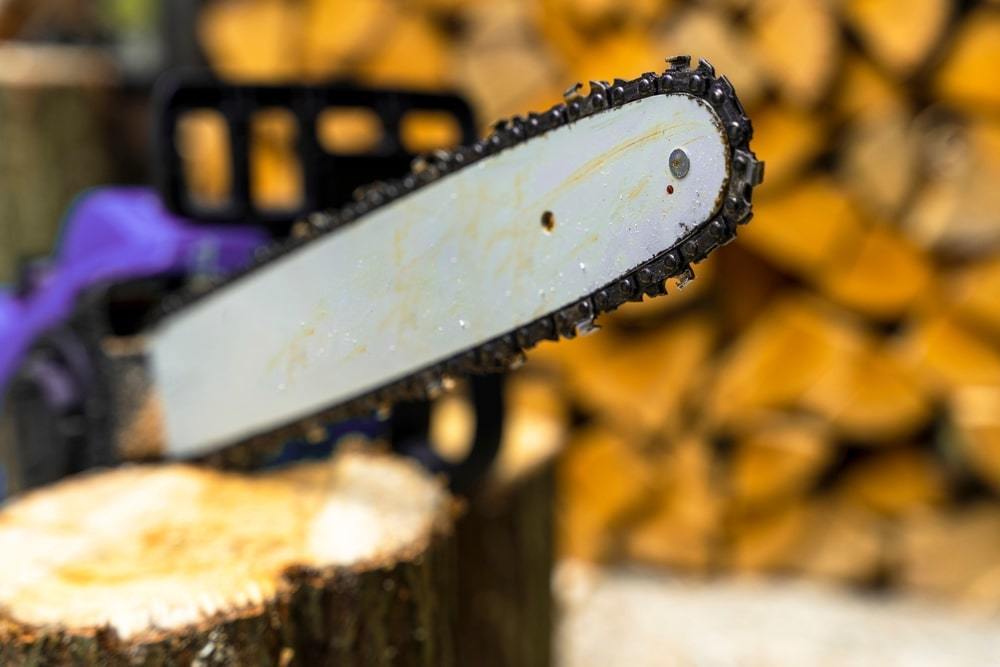Chainsaws have revolutionized the way we approach outdoor tasks, offering power and versatility for activities like tree cutting, firewood processing, and landscaping.
In this in-depth guide, we will explore the world of chainsaws, covering different types, crucial safety measures, maintenance practices, and the wide range of applications where they excel.
Whether you’re a homeowner, DIY enthusiast, or professional, this guide will equip you with the knowledge and skills to handle a chainsaw effectively while prioritizing safety at every step.
Understanding Chainsaw Varieties
a. Gas-Powered Chainsaws: Engineered for heavy-duty work, gas-powered chainsaws provide exceptional power and durability. They are favored by professionals and homeowners dealing with demanding cutting tasks.
b. Electric Chainsaws: Lightweight and nimble, electric chainsaws are ideal for lighter residential work. They require a power source and are well-suited for occasional use.
c. Battery-Powered Chainsaws: Offering portability and freedom from cords, battery-powered chainsaws deliver convenience without compromising performance. They are perfect for moderate cutting tasks, providing a balance between power and mobility.
Safety Precautions for Chainsaw Operation
a. Personal Protective Equipment (PPE): Prioritize safety by donning essential protective gear, including chainsaw chaps, safety glasses, gloves, and sturdy boots with reinforced toe caps.
b. Proper Handling and Grip: Master the correct grip technique to ensure control and minimize the risk of accidents.
c. Maintenance and Inspection: Regularly inspect and maintain your chainsaw to ensure optimal performance. Check chain tension, sharpness, and lubrication before each use.
d. Safe Working Practices: Adhere to
recommended safety practices, such as maintaining a safe distance from others, identifying potential hazards, and employing proper cutting techniques to mitigate kickback.

Essential Chainsaw Maintenance
a. Chain Sharpening: Learn effective sharpening techniques using a chainsaw file or sharpener to maintain a sharp chain for efficient cutting.
b. Chain Tension Adjustment: Maintain proper chain tension to prevent slippage or binding during operation. Appropriate tension ensures safe and effective cutting.
c. Lubrication: Ensure sufficient lubrication by regularly monitoring and replenishing the oil reservoir with the recommended chain oil. Proper lubrication reduces friction and facilitates smooth operation.
d. Air Filter and Spark Plug Care: Keep the air filter clean or replace it regularly to maintain optimal engine performance. Additionally, inspect and clean the spark plug to ensure efficient combustion.
Diverse Applications of Chainsaws
a. Tree Felling and Pruning: Chainsaws are indispensable for cutting down trees, trimming branches, and shaping hedges. Familiarize yourself with proper techniques and safety precautions for tree work.
b. Firewood Processing: Efficiently cut, buck, and split firewood using a chainsaw, making it a valuable tool for heating and cooking purposes.
c. Landscaping and Outdoor Maintenance:
Chainsaws excel at tasks like brush clearing, removing fallen trees, and creating intricate wood designs for landscaping projects.
d. Emergency Situations: Chainsaws play a vital role in clearing fallen trees and debris during emergencies or natural disasters, aiding in the restoration of access and facilitating post-disaster cleanup efforts.
Conclusion
Chainsaws are powerful tools that, when handled with care and proficiency, significantly enhance productivity in outdoor tasks.
By understanding different chainsaw types, emphasizing safety measures, adhering to regular maintenance, and exploring their diverse applications, you can wield a chainsaw confidently.
Always prioritize safety and responsible operation. With this comprehensive guide, you are well-equipped to master chainsaw skills, ensuring safe and efficient operation in all your outdoor endeavors.
